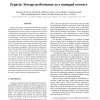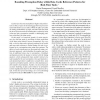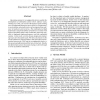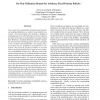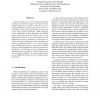RTAS
2006
IEEE
14 years 6 months ago
2006
IEEE
Large-scale storage systems often hold data for multiple applications and users. A problem in such systems is isolating applications and users from each other to prevent their wor...
RTAS
2006
IEEE
14 years 6 months ago
2006
IEEE
Caches have become invaluable for higher-end architectures to hide, in part, the increasing gap between processor speed and memory access times. While the effect of caches on timi...
RTAS
2006
IEEE
14 years 6 months ago
2006
IEEE
Operating systems for reconfigurable devices enable the development of embedded systems where software tasks, running on a CPU, can coexist with hardware tasks running on a recon...
RTAS
2006
IEEE
14 years 6 months ago
2006
IEEE
Prior research on schedulability bounds focused primarily on bounding utilization as a means to meet deadline constraints. Non-trivial bounds were found for a handful of schedulin...
RTAS
2006
IEEE
14 years 6 months ago
2006
IEEE
Despite a rapid decrease in the price of solid state memory devices, system memory is still a very precious resource in embedded systems. The use of shared libraries is known to b...
RTAS
2006
IEEE
2006
IEEE
METERG: Measurement-Based End-to-End Performance Estimation Technique in QoS-Capable Multiprocessors
14 years 6 months ago
Multiprocessor systems present serious challenges in the design of real-time systems due to the wider variation of execution time of an instruction sequence compared to a uniproce...
RTAS
2006
IEEE
14 years 6 months ago
2006
IEEE
A notable features of many proposed Wireless Sensor Networks (WSNs) deployments is their scale: hundreds to thousands of nodes linked together. In such systems, modeling the state...
RTAS
2006
IEEE
14 years 6 months ago
2006
IEEE
Real-time media servers are becoming increasingly important as the Internet supports more and more multimedia applications. In order to meet these ever increasing demands, real-ti...
RTAS
2006
IEEE
14 years 6 months ago
2006
IEEE
The evolution of battery technology is not being able to keep up with the increasing performance demand of mobile embedded systems. Therefore, battery life has become an important...
RTAS
2006
IEEE
14 years 6 months ago
2006
IEEE
We present an assume-guarantee interface algebra for real-time components. In our formalism a component implements a set of task sequences that share a resource. A component inter...
